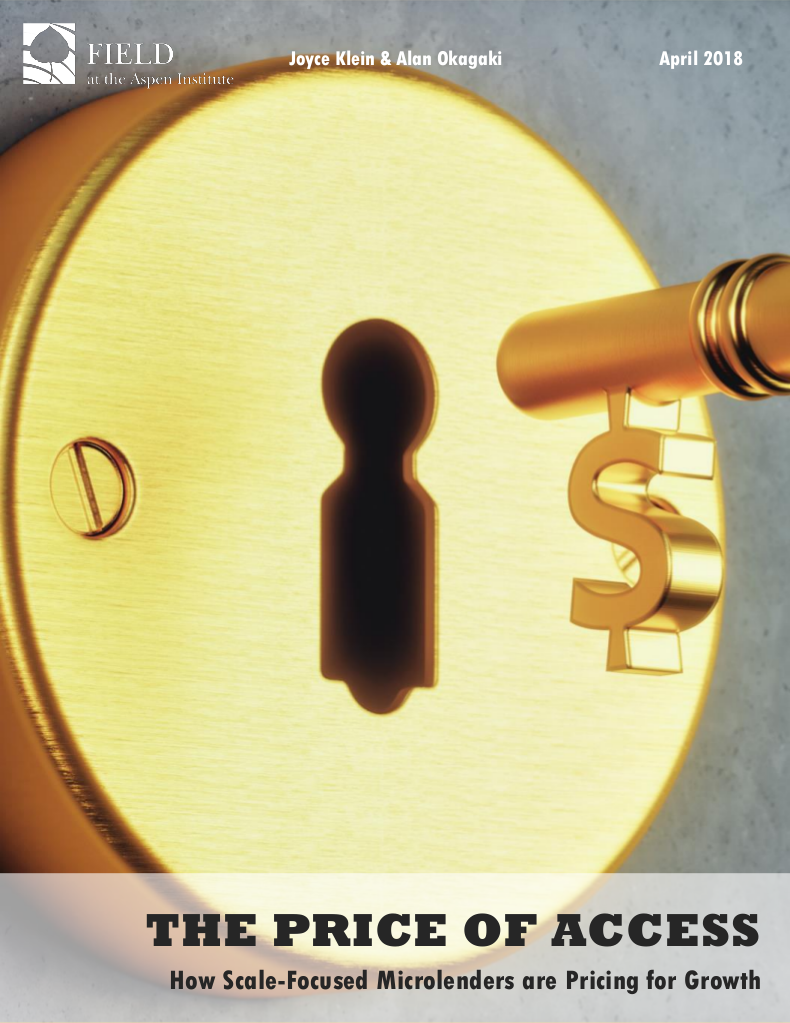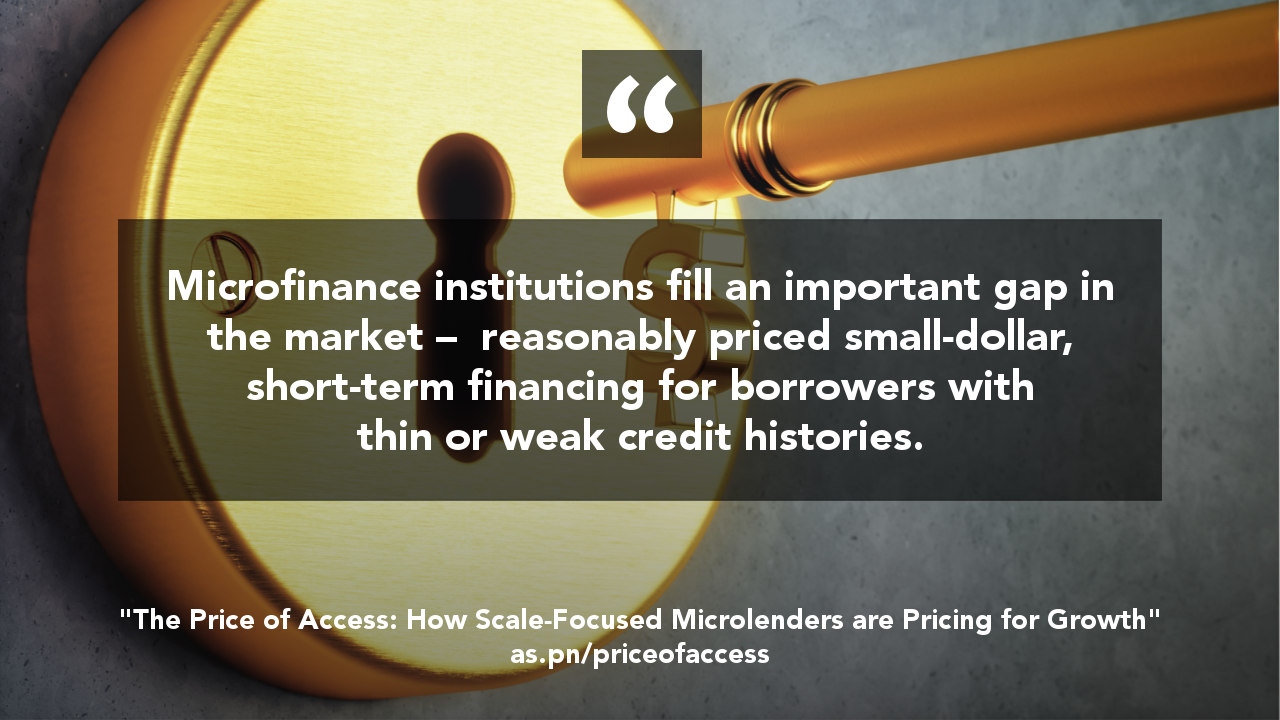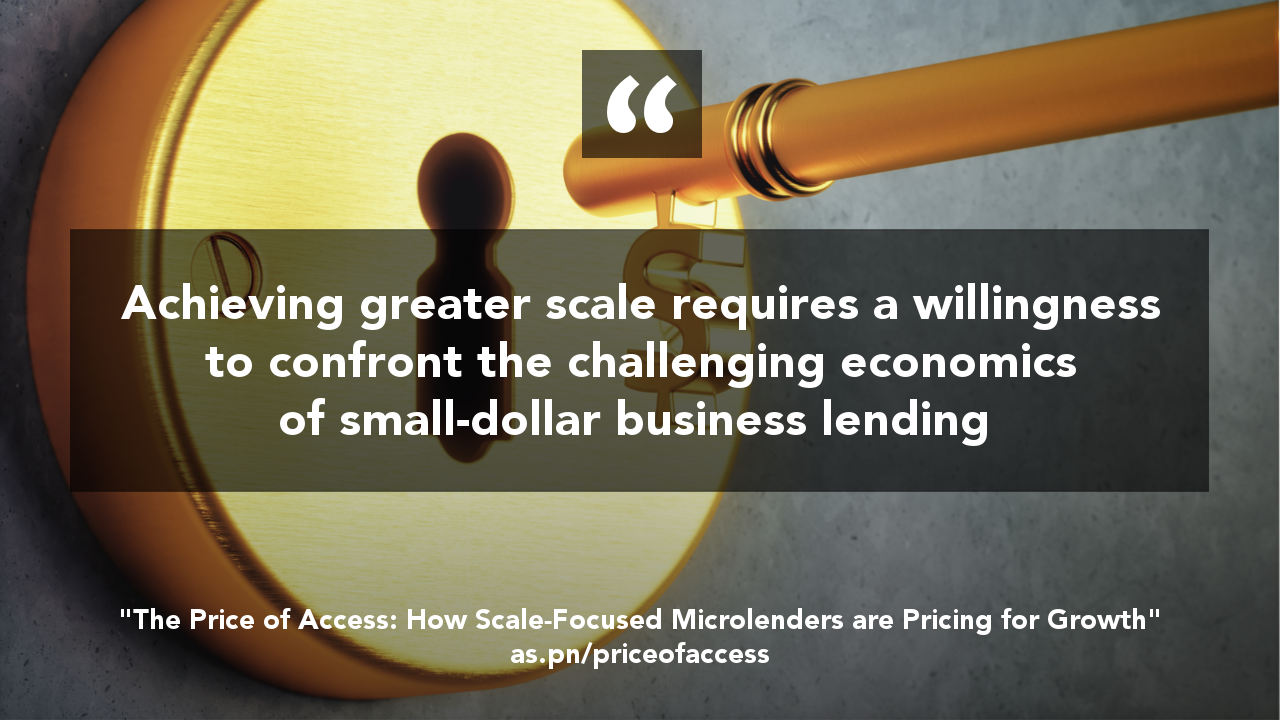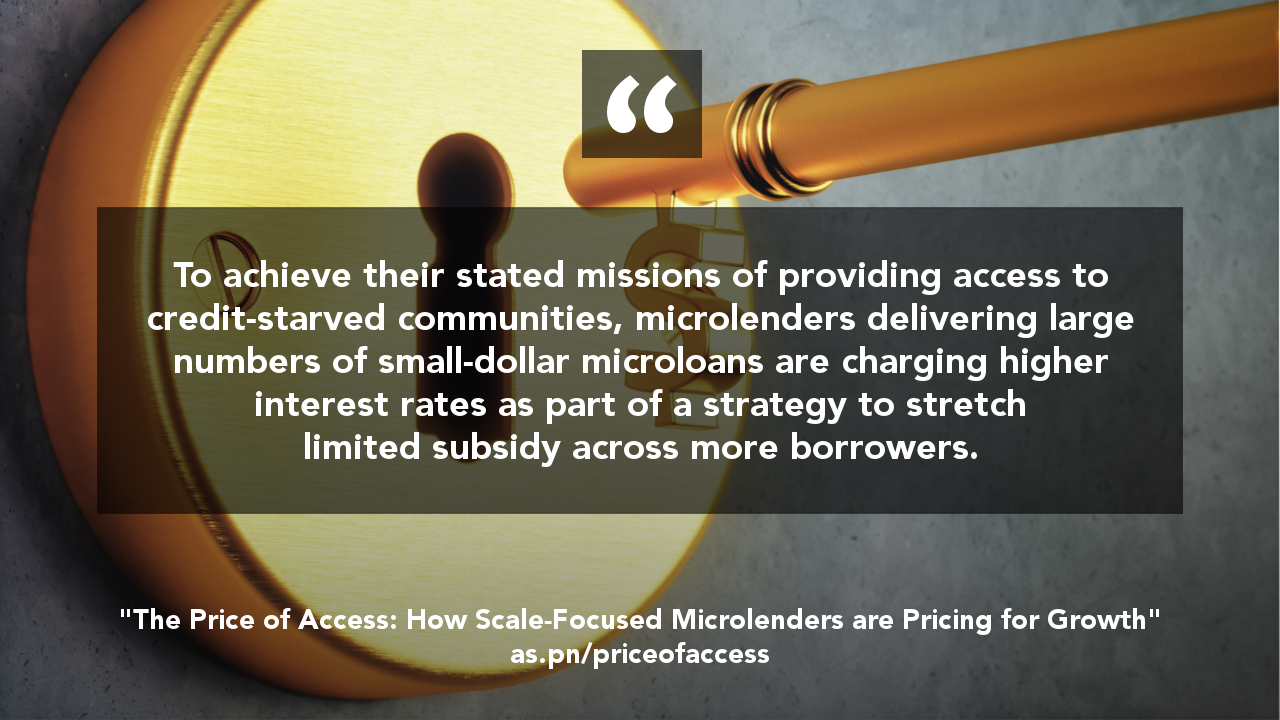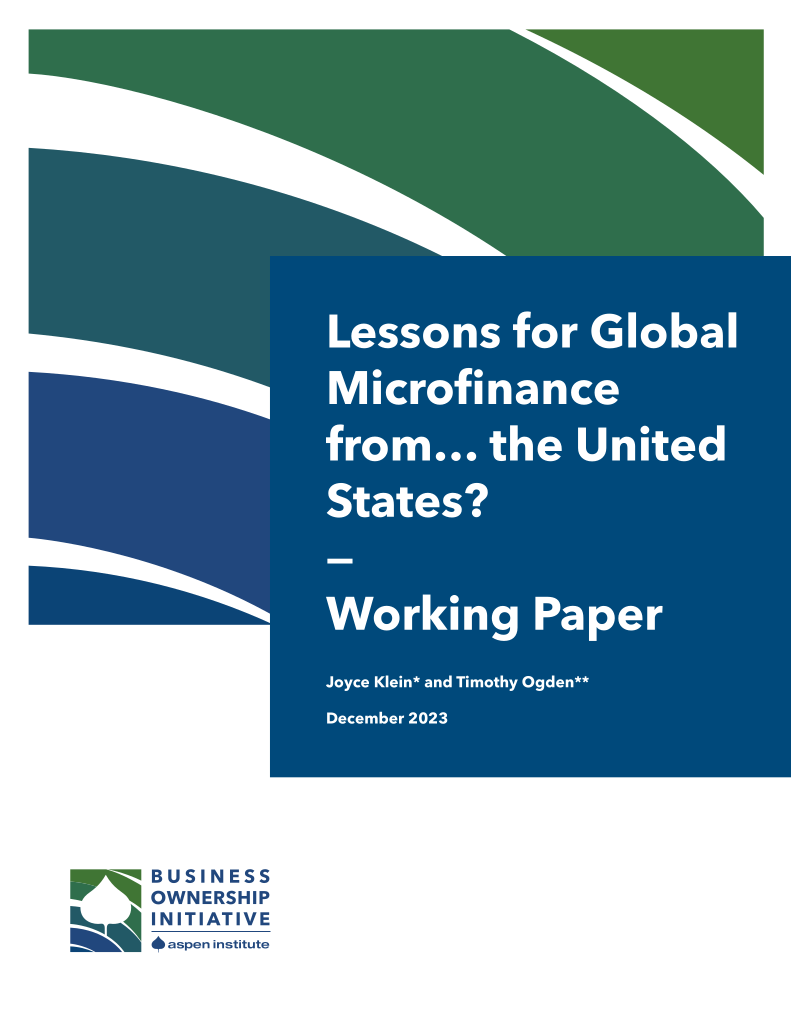While business lending has picked up since the Great Recession, small businesses that need relatively small amounts of capital — especially loans less than $100,000 — are challenged to find affordable options. This is particularly true for businesses with thin or weak credit histories, or those owned by women and entrepreneurs of color. Microfinance institutions focus on reaching these business owners, but face challenges in growing their lending, in part due to the costs associated with making these loans.
In this publication, Joyce Klein and Alan Okagaki explore how US microfinance institutions are pricing loans at higher interest rates as part of their strategy to expand their services and meet the needs of more underserved entrepreneurs.
For lenders with large loan portfolios, charging higher interest rates on their smaller, short-term business loans has a significant impact. Small increases in rates allow microfinance institutions to recoup more of their costs and expand their lending services, giving more underserved entrepreneurs much-needed access to credit. When the loans are properly sized, structured, and underwritten, higher interest rates have minimal impact on the loans’ affordability for borrowers.
To begin addressing the gap in the supply of responsible small-dollar business credit and the challenges that microlenders face in financing the growth of their lending, it is essential to reconsider the role of pricing in scaling the growth of microfinance institutions in the US. This paper explores the unique approach microfinance institutions focused on scale and growth are taking to setting loan prices.
Share
Tweet New report! “The Price of Access: How Scale-Focused Microlenders are Pricing for Growth” by Joyce Klein (@AspenMicro) & Alan Okagaki.
Tweet The small business credit gap has persisted since the Great Recession. How can microfinance institutions help entrepreneurs secure the financing they need to succeed?
Tweet Loan pricing plays a significant role in determining the scale of microenterprise programs. How should microfinance institutions think about this issue as they work to expand credit to aspiring entrepreneurs?
Tweet To give small businesses a boost, especially those run by women and entrepreneurs of color, microfinance institutions must think very carefully about how to price the loans they offer.
Tweet Achieving greater scale in microfinance requires confronting the challenging economics of small-dollar business lending. How can institutions set their rates to balance affordability with the ability to generate revenues needed to support growth?
Images
Learn More
The Business Ownership Initiative works to build understanding and strengthen the role of business ownership as an economic opportunity strategy. BOI is an initiative of the Economic Opportunities Program.
The Economic Opportunities Program advances strategies, policies, and ideas to help low- and moderate-income people thrive in a changing economy. Follow us on social media and join our mailing list to stay up-to-date on publications, blog posts, events, and other announcements.
